Great Smoky Mountains National Park
Great Smoky Mountains National Park
Great Smoky Mountains National Park is a national park located in the southeastern United States, straddling the border between Tennessee and North Carolina. It is the most visited national park in the United States, with over 14 million visitors annually (in 2020). The park encompasses a diverse range of habitats, including lush forests, cascading streams, and rugged peaks. It is home to a wide variety of plant and animal life, including over 1,500 species of flowering plants and more than 80 species of mammals. The park also features a number of historic sites, including log cabins, grist mills, and churches that were built by early settlers in the region. Visitors to the park can enjoy activities such as hiking, camping, fishing, and wildlife viewing.
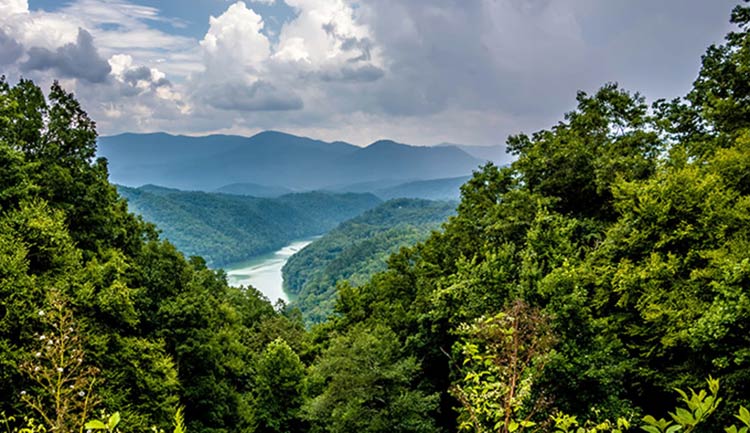
Location
Great Smoky Mountains National Park is located in the southeastern United States, on the border between the states of Tennessee and North Carolina. It is situated in the southern Appalachian Mountains and covers an area of over 522,419 acres (2,114.15 km2). The park is roughly bisected by the state line, with the majority of the park (about 80%) located in Tennessee and the remaining portion located in North Carolina. The park is easily accessible from major cities such as Knoxville, Tennessee and Asheville, North Carolina, and is also within a day’s drive of several major metropolitan areas in the eastern United States.

History and name of the Park
Great Smoky Mountains National Park was established in 1934 and is one of the oldest national parks in the United States. The park was created to protect the diverse plant and animal life found in the southern Appalachian Mountains, as well as to preserve the historic and cultural sites found in the region. The park is named for the Blue Ridge Mountains, which are a part of the Appalachian Mountains and are often shrouded in a blue haze, giving them their name “Smoky Mountains”.
The land that the park now occupies has a rich history, dating back thousands of years. The area was originally settled by the Cherokee Nation, who lived in the region for hundreds of years before the arrival of European settlers. In the late 1700s and early 1800s, European settlers began moving into the area, and many of the historic structures and sites found in the park today were built by these early settlers.
In the early 20th century, concerns began to be raised about the destruction of the natural resources and cultural heritage of the southern Appalachian Mountains, leading to the establishment of the park in 1934. The park was created through the efforts of local citizens, conservation groups, and the federal government, which acquired the land for the park through a combination of donations, purchases, and eminent domain.
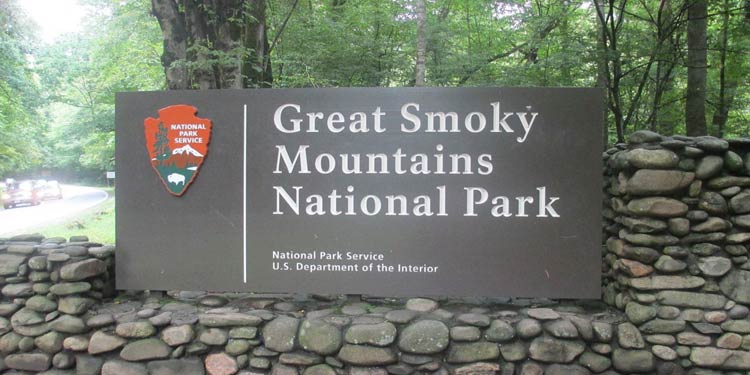
Geography
Great Smoky Mountains National Park is located in the southern Appalachian Mountains, which are a part of the larger Appalachian Mountain Range that runs from Canada to Alabama. The park is situated along the border of Tennessee and North Carolina and covers an area of over 522,000 acres.
The park features a diverse range of landscapes, from lush forests and cascading streams to rugged peaks and sweeping vistas. The highest point in the park is Clingmans Dome, which stands at an elevation of 6,643 feet. The park is also home to many rivers and streams, including the Little Pigeon River and the Oconaluftee River.
The park is known for its rich biodiversity and is home to over 1,500 species of flowering plants and more than 80 species of mammals. The park is also an important birdwatching destination, with over 200 species of birds that have been recorded in the park. The park is divided into two distinct regions: the Tennessee side and the North Carolina side, and each area has its own unique landscapes and ecosystems.
Overall, Great Smoky Mountains National Park is a unique and beautiful destination that offers visitors the chance to experience the natural beauty of the southern Appalachian Mountains while also learning about the diverse plant and animal life, as well as the cultural heritage of the region.
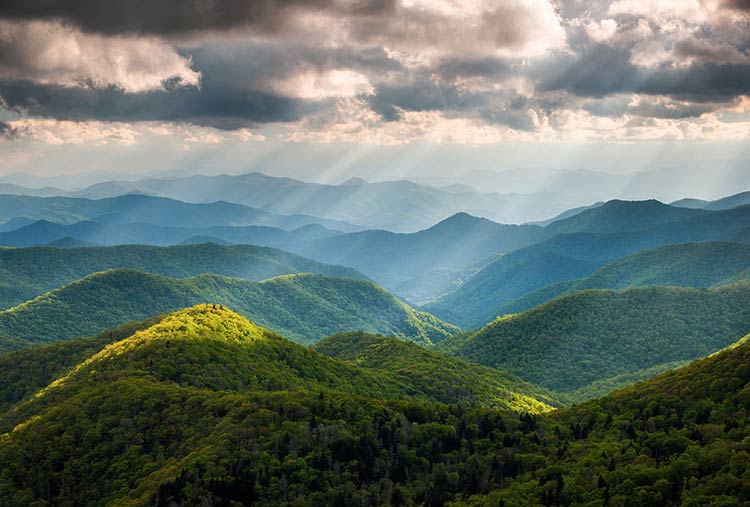
Geology
Great Smoky Mountains National Park is located in the southern Appalachian Mountains, which are a part of the larger Appalachian Mountain Range that runs from Canada to Alabama. The park is situated along the border of Tennessee and North Carolina and covers an area of over 522,000 acres.
The geology of the park is complex and varied, featuring a wide range of rock types, formations, and landforms. The park is primarily composed of rock formations from the Late Precambrian and Paleozoic eras. The most common rock types found in the park include sandstone, shale, and limestone.
The park is known for its rich biodiversity and is home to over 1,500 species of flowering plants and more than 80 species of mammals. The park is also an important birdwatching destination, with over 200 species of birds that have been recorded in the park. The park is divided into two distinct regions: the Tennessee side and the North Carolina side, and each area has its own unique landscapes and ecosystems.
The Great Smoky Mountains are a part of the Blue Ridge Mountains, which are a subset of the Appalachian Mountains, and are the oldest mountain chain in North America. The park’s landscape is the result of millions of years of erosion and weathering, with the oldest rocks found at the bottom of the mountain chain, and the youngest rocks found at the top. The park also has a significant number of waterfalls, many of which are the result of the erosion of softer rocks.
In summary, Great Smoky Mountains National Park has a diverse and complex geology that’s made up of different rock formations and landforms which gives the place its beauty and biodiversity. The park’s geology is an important aspect of the park’s natural and cultural history and is a major reason why the park is such a popular destination for visitors.
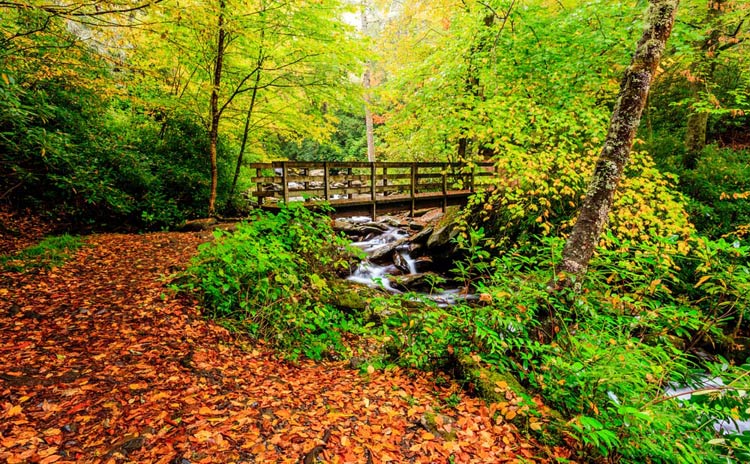
Climate
Great Smoky Mountains National Park has a humid subtropical climate, which is characterized by mild winters, warm summers, and high levels of precipitation throughout the year. The park is located in the southern Appalachian Mountains, which can experience temperature inversions during the winter, resulting in colder temperatures at higher elevations than at lower elevations.
The average temperature in the park ranges from the low-40s Fahrenheit in the winter to the low-80s Fahrenheit in the summer. The park receives an average of about 80 inches of precipitation per year, with the majority of it falling as rain. The park can receive snowfall, especially in higher elevations, but it’s not a common occurrence.
The park’s climate is influenced by its location in the southern Appalachian Mountains, which can experience temperature inversions during the winter, resulting in colder temperatures at higher elevations than at lower elevations. The park’s climate is also influenced by its proximity to the Gulf of Mexico, which can bring high levels of humidity and precipitation to the region.
The park’s climate is also affected by its elevation, with the higher elevations experiencing cooler temperatures and more precipitation than the lower elevations. The park’s climate also affects the park’s ecosystems, with different plant and animal species adapted to the specific climatic conditions found in the park.
Overall, Great Smoky Mountains National Park’s climate is characterized by mild winters, warm summers, and high levels of precipitation throughout the year. The park’s climate plays an important role in shaping the park’s ecosystems and is an important aspect of the park’s natural and cultural history.

Flora in Great Smoky Mountains National Park
Great Smoky Mountains National Park is home to a wide variety of flora, with over 1,500 species of vascular plants and more than 100 species of mosses and liverworts. The park’s diverse plant life is influenced by the park’s elevation, which ranges from around 875 feet to 6,643 feet (267 to 2025 m), and the park’s location in the southern Appalachian Mountains. Some of the most notable plant species found in the park include:
- Tulip Poplar
The tulip poplar is the state tree of Tennessee and is one of the most common trees found in the park. It can grow up to 150 feet tall and is known for its large, tulip-shaped flowers. - Fraser Fir
The Fraser fir is a coniferous tree that is found in the park’s high elevations. It is known for its fragrant needles and cones. - Rhododendron
The rhododendron is a large, evergreen shrub that is found in the park’s higher elevations. It is known for its large, showy flowers that bloom in the spring and early summer. - Flame azalea
The flame azalea is a deciduous shrub that is found in the park’s higher elevations. It is known for its bright orange and red flowers that bloom in the late spring and early summer. - Mountain Laurel
The mountain laurel is an evergreen shrub that is found in the park’s higher elevations. It is known for its large, showy flowers that bloom in the late spring and early summer. - Galax
Galax is a herbaceous perennial plant that is found in the park’s higher elevations, it is known for its glossy leaves and small white flowers.
The park’s diverse plant life plays an important role in shaping the park’s ecosystems and is an important aspect of the park’s natural and cultural history. The park’s plant life is also an important resource for the park’s wildlife, providing food and habitat for a wide variety of animal species.
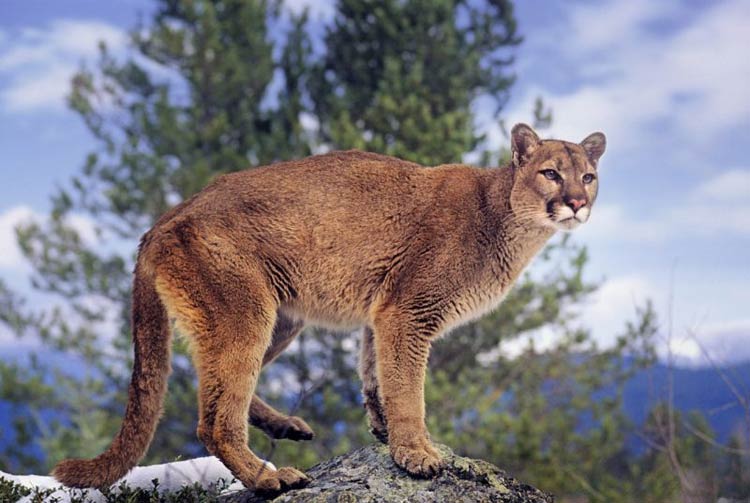
Fauna in Great Smoky Mountains National Park
Great Smoky Mountains National Park is home to a wide variety of fauna, including over 80 species of mammals, over 200 species of birds, and more than 60 species of reptiles and amphibians. Some of the most notable animal species found in the park include:
- Black bear
The park is home to one of the largest black bear populations in the eastern United States. Black bears can be found throughout the park, but are most commonly found in the more remote and higher elevations. - Elk
Elk were reintroduced to the park in 2001, and the population has been growing steadily since then. Elk can be found in the Cataloochee and Oconaluftee areas of the park. - White-tailed deer
White-tailed deer are common throughout the park and can be found in a variety of habitats, including forests, fields, and wetlands. - Wild turkey
Wild turkeys are common throughout the park and can be found in a variety of habitats, including forests and fields. - Eastern gray squirrel
Eastern gray squirrels are common throughout the park and can be found in a variety of habitats, including forests, fields, and wetlands. - Great horned owl
Great horned owls can be found throughout the park and are known for their distinctive hooting calls. - Salamanders
The park is home to more than 30 species of salamanders, which is more than any other park in the world. - Snakes
The park is home to several species of snakes, including the black rat snake, copperhead, and timber rattlesnake.
The park’s fauna plays an important role in shaping the park’s ecosystems and is an important aspect of the park’s natural and cultural history. It’s important to be aware of the park’s animal inhabitants and to follow the park’s regulations and guidelines for viewing and interacting with wildlife.

Laurel Falls Trail
Laurel Falls Trail is a popular hiking trail in the Great Smoky Mountains National Park. The trail is 2.6 miles round trip and is considered to be moderate in difficulty. The trail leads to the 80-foot-tall Laurel Falls, which is one of the most visited waterfalls in the park.
The trailhead for Laurel Falls Trail is located at the Laurel Falls parking area, which is located off of Little River Road, about 2 miles from the Sugarlands Visitor Center. The trail is mostly paved and accessible to people with mobility impairments. The trail is also wheelchair accessible to the first viewpoint of the waterfall. The trail is open year-round and is a great destination for visitors of all ages and experience levels.
Along the trail, visitors can enjoy the beautiful scenery of the park, including the lush, green forest, the clear, cold mountain streams, and the beautiful wildflowers that bloom in the spring and summer. The trail also provides a great opportunity to see a variety of wildlife, including white-tailed deer, black bears, and wild turkeys.
It’s important to note that during peak seasons, the trailhead parking lot can fill up quickly, and visitors may need to park along the road and walk to the trailhead. Also, visitors should be aware of possible thunderstorms and flash flooding, which can occur at any time of the year, and plan accordingly.

Clingmans Dome and Mount Le Conte
Clingmans Dome and Mount Le Conte are two popular destinations in the Great Smoky Mountains National Park.
Clingmans Dome is the highest point in the park, reaching an elevation of 6,643 feet. Visitors can reach the summit via a paved, half-mile walk from the Clingmans Dome parking area. The trail leads to an observation tower, which offers panoramic views of the surrounding mountains and valleys. On a clear day, visitors can see as far as 100 miles in every direction. Clingmans Dome is also the highest point on the Appalachian Trail and is a popular destination for hikers. The Clingmans Dome area is also popular for its spruce-fir forest and wildflowers.
Mount Le Conte is another popular destination in the park, reaching an elevation of 6,593 feet (2009.5 m). Mount Le Conte is the third-highest mountain in the park and is known for its beautiful views, hiking trails, and historic lodges. The mountain has several popular hiking trails, including the Alum Cave Trail, the Rainbow Falls Trail, and the Boulevard Trail. Visitors can also stay overnight at one of the mountain’s historic lodges, Le Conte Lodge, which is the highest guest lodge in the eastern United States. The area around Mount Le Conte is known for its beautiful wildflowers, including the Catawba rhododendron, which blooms in June.
Both Clingmans Dome and Mount Le Conte are popular destinations in the park and offer visitors the opportunity to experience the park’s beautiful scenery and natural beauty. However, it’s important to note that both areas are at high elevations and can be quite chilly, even during the summer months, so it is important to dress in layers and prepare accordingly.
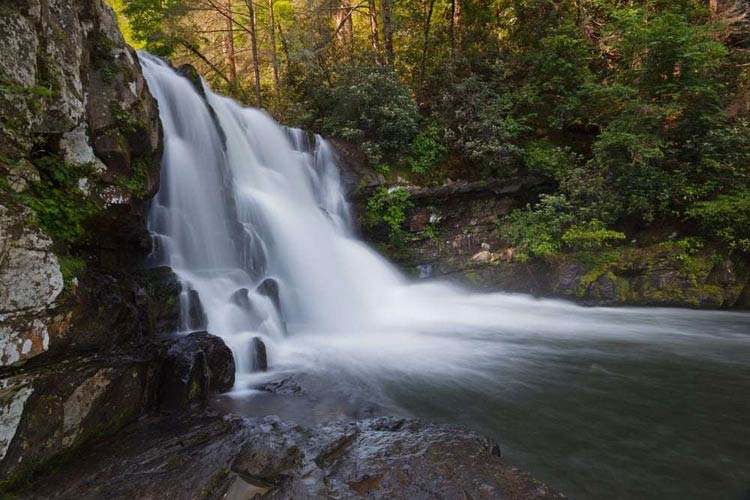
Tourism and tourist main attractions in the park
Great Smoky Mountains National Park is one of the most visited national parks in the United States, with over 12 million visitors each year. The park offers a wide range of activities and attractions for visitors, including hiking, camping, fishing, wildlife viewing, and scenic drives. Some of the main tourist attractions in the park include:
- Hiking
The park has over 800 miles of hiking trails, which offer visitors the opportunity to explore the park’s diverse landscape, including its lush forests, cascading waterfalls, and breathtaking mountain vistas. Some of the most popular hiking trails in the park include: the Laurel Falls Trail, the Alum Cave Trail, and the Chimney Tops Trail. - Scenic Drives
The park offers several scenic drives that provide visitors with the opportunity to see some of the park’s most spectacular views, including the Newfound Gap Road, which runs for 33 miles through the park and provides access to several popular hiking trails and scenic overlooks. The Cades Cove Loop Road is another popular drive, that offers visitors the chance to see historic buildings and wildlife. - Wildlife Viewing
The park is home to a wide variety of wildlife, including black bears, white-tailed deer, wild turkeys, and elk. Visitors can also see a variety of birds, including warblers, thrushes, and vireos. - Fishing
The park’s streams and rivers offer excellent opportunities for fishing. Visitors can fish for a variety of species, including brook, rainbow, and brown trout. - Camping
The park has 10 front-country campgrounds and more than 2,000 backcountry campsites, which offer visitors the opportunity to experience the park’s natural beauty and wildlife in a more immersive way. - Visitor Centers
The park has several visitor centers that offer information and educational exhibits about the park’s history, culture, and natural resources. Some of the most popular visitor centers include: Sugarlands Visitor Center, Oconaluftee Visitor Center and Cades Cove Visitor Center. - Waterfalls
The park is home to many beautiful waterfalls, including the famous Laurel Falls, Grotto Falls and Abrams Falls. - Historic sites
The park has many historic sites, including the Mingus Mill, the John Oliver Cabin, and the Cable Mill. These sites offer visitors a glimpse into the lives of the people who lived in the park over a century ago.
All of these activities and attractions offer visitors the opportunity to experience the park’s natural beauty and rich cultural heritage, making the Great Smoky Mountains National Park a popular destination for tourists and outdoor enthusiasts.

Ober Gatlinburg Amusement Park & Ski Area
Ober Gatlinburg is an amusement park and ski area located in Gatlinburg, Tennessee, near Great Smoky Mountains National Park. It is a popular tourist destination that offers a variety of activities for visitors of all ages.
The amusement park features a variety of rides and attractions, including a chairlift, an alpine slide, an indoor ice skating rink, and a wildlife encounter. It also has an aerial tramway that takes visitors from downtown Gatlinburg to the top of the mountain.
The ski area features several ski and snowboard trails, as well as a terrain park. There are also ski and snowboard lessons available for those who are new to the sport. Ober Gatlinburg also offers tubing and snowshoeing during the winter months.
In addition to the amusement park and ski area, Ober Gatlinburg also features a variety of shops, restaurants, and arcades. There are also many special events and festivals held throughout the year, such as Oktoberfest, Christmas and New Year’s Eve celebrations.
Ober Gatlinburg is a popular destination for tourists visiting Great Smoky Mountains National Park, offering visitors the opportunity to experience year-round fun and adventure. The combination of skiing, an amusement park and wildlife in one place makes it a unique and fun destination for visitors of all ages.

Historic areas within the national park
Great Smoky Mountains National Park has several historic areas within its boundaries, each with their own unique stories and significance. Some of the most notable historic areas within the park include:
- Cades Cove
This is one of the most popular and well-preserved historic areas in the park. The valley was settled by European Americans in the 18th and 19th centuries, and visitors can see the remains of log cabins, churches, and other buildings from that era. - Elkmont
This is a historic district that was developed in the early 20th century as a summer resort community. Visitors can see the remains of several large, elegant summer homes and cottages that were built by wealthy families from Knoxville and other nearby cities. - Cataloochee
This is another historic valley that was settled by European Americans in the late 19th century. Visitors can see the remains of several log cabins, barns, and other structures from the period. - Roaring Fork
This is a historic area that features a self-guiding 5.5-mile loop road that will take you by the remnants of several homesteads and a log cabin that was built by Smoky Mountain’s first permanent settlers. - Mingus Mill
This is a historic grist mill that was built in 1886 and it’s located near Cherokee and it operates to this day. - The John Oliver Cabin
This cabin is located in the Elkmont area and it was built in the 1830s. It’s one of the oldest structures in the park and it’s open to visitors from spring to fall.
All of these historic areas offer a glimpse into the lives and culture of the people who lived in the park over a century ago, and provide an interesting contrast to the natural beauty of the park.

Cultural importance
Great Smoky Mountains National Park holds significant cultural importance for several different groups of people.
First and foremost, the park is of great importance to the Cherokee Nation, who have lived in the region for centuries before the arrival of European settlers. The park is home to several historic sites and structures that are important to the Cherokee people, including the Oconaluftee Indian Village, which is an outdoor living history museum that interprets the history and culture of the Cherokee people.
Additionally, the park is also important to the descendants of European settlers who lived in the region in the 18th and 19th centuries. The park features several historic structures and sites that were built by these early settlers, including log cabins, grist mills, and churches. These structures and sites provide important insight into the lives of the people who settled in the region and help to preserve the cultural heritage of the southern Appalachian Mountains.
Great Smoky Mountains National Park is also a popular destination for visitors interested in learning about the cultural heritage of the southern Appalachian Mountains. The park offers a variety of interpretive programs and guided tours that help visitors to understand the history and culture of the region.
Finally, Great Smoky Mountains National Park also plays an important role in preserving the cultural heritage of the region by protecting the natural resources and wildlife found within the park. These resources are an important part of the cultural heritage of the southern Appalachian Mountains and the park is committed to preserving them for future generations.
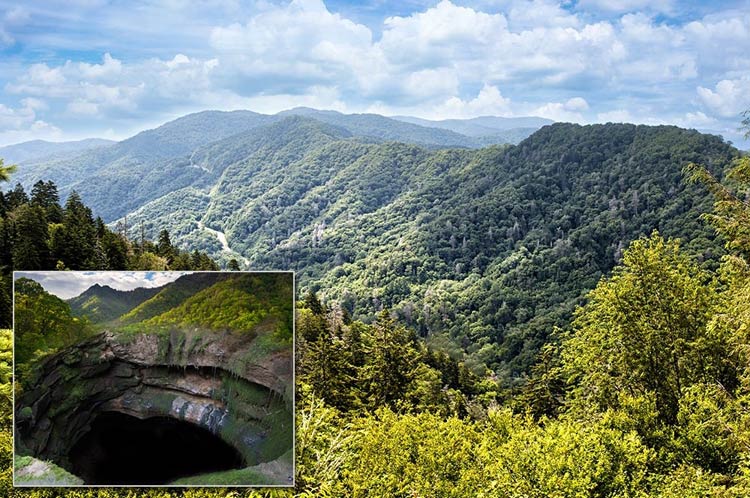
Interesting facts about Great Smoky Mountains National Park
Great Smoky Mountains National Park is an incredibly diverse and unique place with many interesting facts and features. Some of the most interesting facts about the park include:
- The park is home to the largest black bear population in the eastern United States.
- The park is also home to the largest variety of wildflowers in North America.
- The park is home to the highest point in Tennessee, Clingmans Dome, which stands at 6,643 feet.
- The park is also home to the highest point in North Carolina, Mount Le Conte, which stands at 6,593 feet.
- The park has the highest average annual precipitation of any national park in the United States, with an average of over 80 inches per year.
- The park is home to over 1,500 species of flowering plants, more than any other national park in the United States.
- The park has over 800 miles of hiking trails, making it one of the most popular destinations for hikers in the United States.
- The park is home to over 200 species of birds, making it a popular destination for bird watching.
- The park is home to several historic sites, including the Mingus Mill and the John Oliver Cabin, which offer visitors a glimpse into the lives of the people who lived in the park over a century ago.
- The park is also home to the largest collection of log buildings in the eastern United States, most of which are located in the Cades Cove area.
- The park is also known for its natural beauty, including its waterfalls, wildflowers and fall colors.
- The park is also home to the longest stretch of undisturbed forest in the eastern United States.
All of these interesting facts and features make Great Smoky Mountains National Park a unique and diverse place that is worth visiting for anyone interested in nature, history, and outdoor activities.
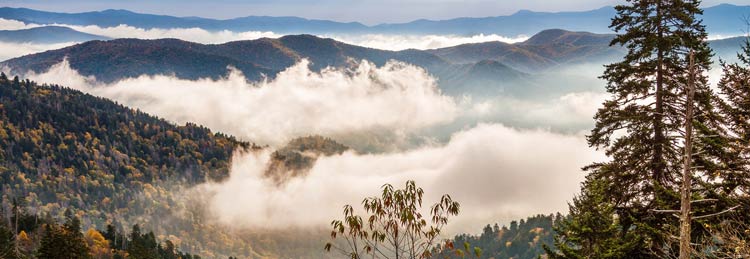
Q&A (questions and answers) about Great Smoky Mountains National Park
Q: What state is Great Smoky Mountains National Park located in?
A: Great Smoky Mountains National Park is located in the states of Tennessee and North Carolina, USA.
Q: What is the highest point in Great Smoky Mountains National Park?
A: The highest point in Great Smoky Mountains National Park is Clingmans Dome, which stands at 6,643 feet.
Q: What is the primary reason for the park’s name?
A: The park is named for the natural fog that often settles over the mountains, giving them a “smoky” appearance.
Q: How many species of birds can be found in the park?
A: Over 200 species of birds can be found in the park.
Q: How many miles of hiking trails does the park have?
A: The park has over 800 miles of hiking trails.
Q: What are the main activities offered in the park?
A: The main activities offered in the park include hiking, camping, fishing, wildlife viewing, and scenic drives.
Q: What is the park’s record for annual precipitation?
A: The park has the highest average annual precipitation of any national park in the United States, with an average of over 80 inches per year.
Q: What is the park’s record for wildflowers?
A: The park is home to the largest variety of wildflowers in North America.
Q: What is the park’s record for the black bear population?
A: The park is home to the largest black bear population in the eastern United States.
Q: What is the park’s record for the highest point in North Carolina?
A: Mount Le Conte which stands at 6,593 feet is the highest point in North Carolina in the park.



















